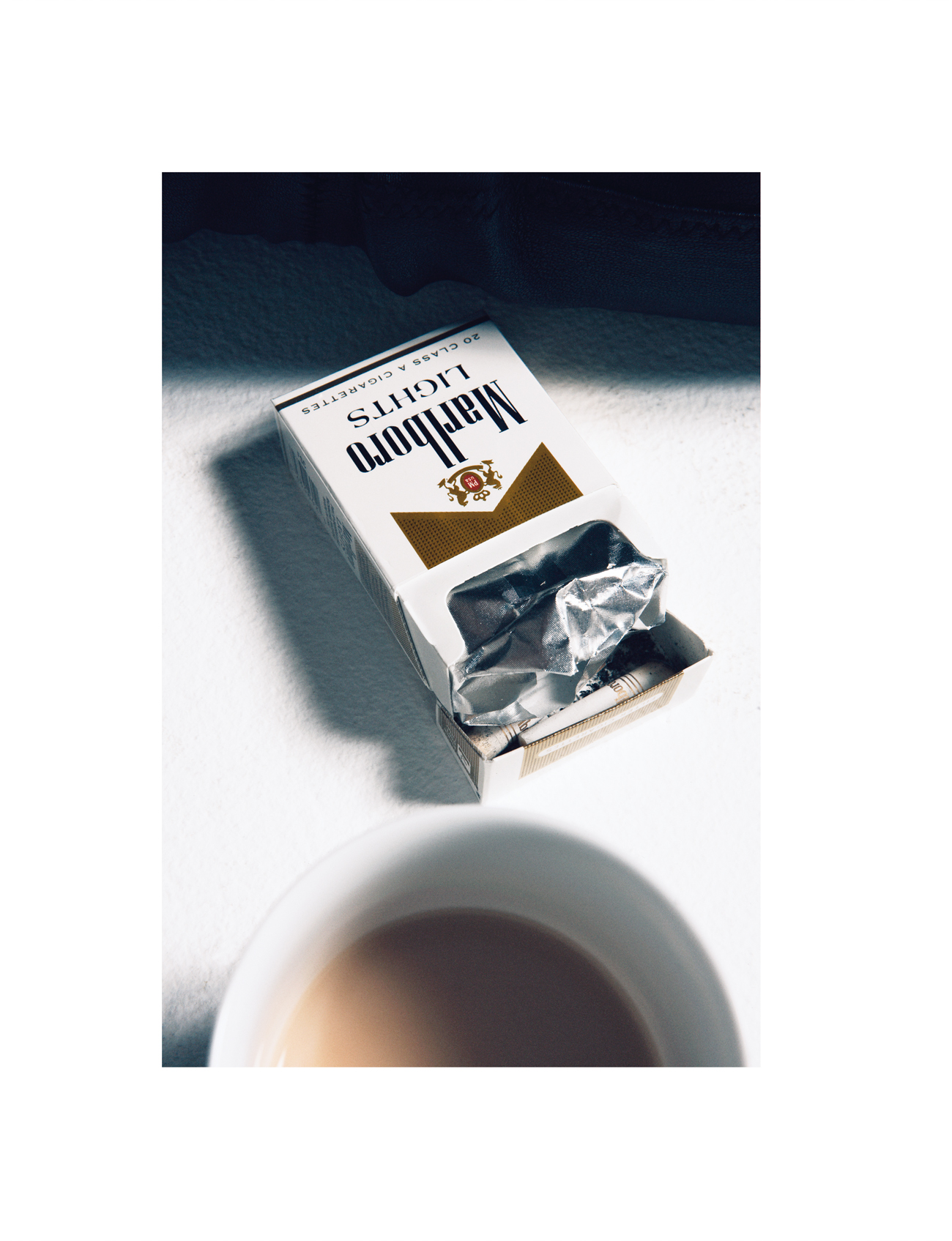Purple Magazine
— F/W 2008 issue 10
Camilla Nickerson, Mario Sorrenti, Lou Doillon
 Mario Sorrenti
Mario Sorrenti
An entire section devoted to personal identity — photographed by MARIO SORRENTI, featuring family pictures, vacation pictures, still lifes, tableaux vivants, a fashion shoot, erotic pictures, a bit of cross-dressing, naked self-portraits on sets of advertising sessions, and one with a cell phone.
portrait #1 CAMILLA NICKERSON
photographed by MARIO SORRENTI
self-styled by CAMILLA NICKERSON
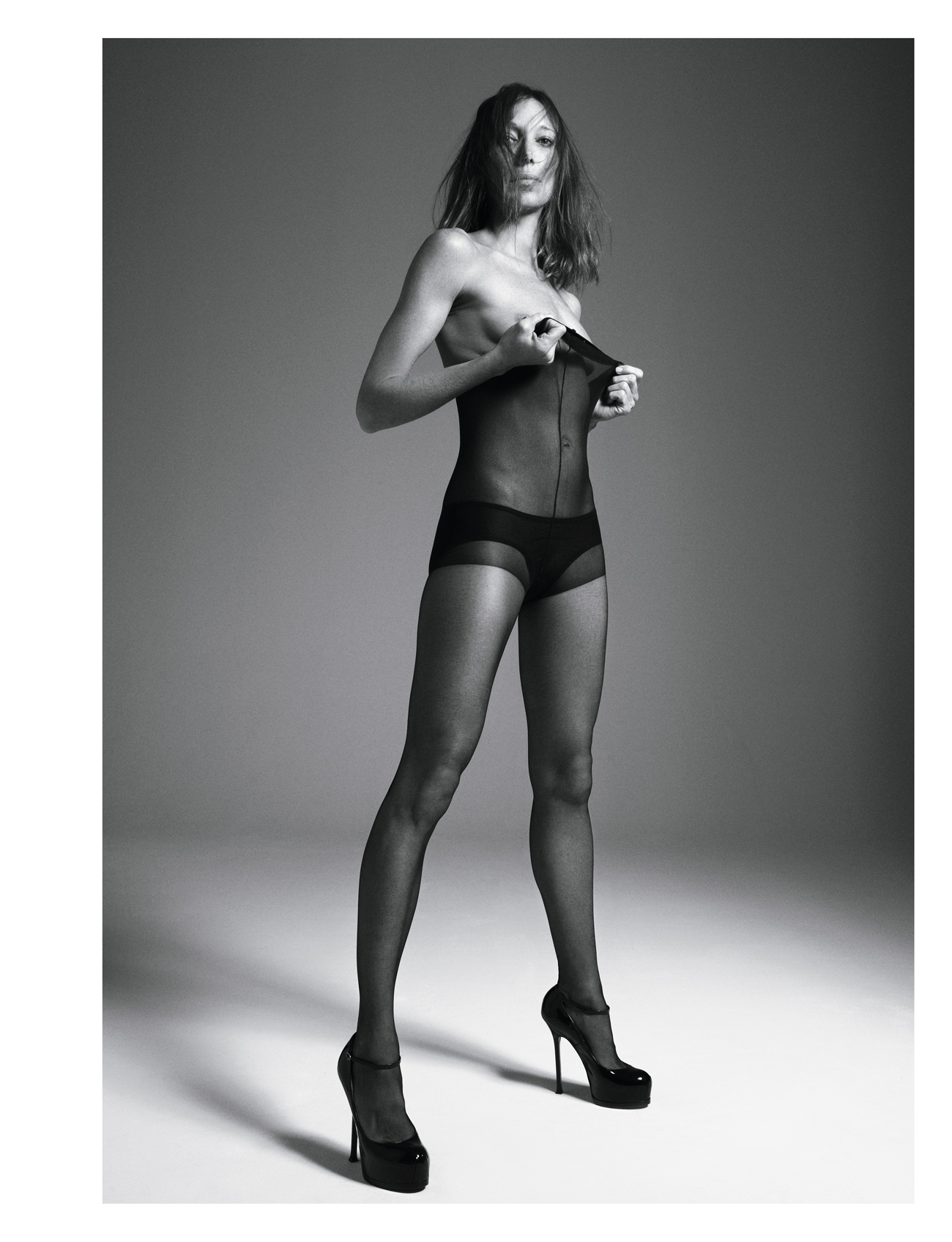 Camilla wears black tights with seam JONATHAN ASTON, black underwear AMERICAN APPAREL<br />and black patent pumps with strap YVES SAINT LAURENT
Camilla wears black tights with seam JONATHAN ASTON, black underwear AMERICAN APPAREL<br />and black patent pumps with strap YVES SAINT LAURENT
portrait #2 the self portraits of MARIO SORRENTI
interview by OLIVIER ZAHM
OLIVIER ZAHM — You just got back from Japan. Did you enjoy your trip?
MARIO SORRENTI — I loved it. I took pictures day and night.
 Camilla wears a black-and-white knit top and skirt RODARTE, black spiky heels CHRISTIAN LOUBOUTIN and black stockings WOLFORD
Camilla wears a black-and-white knit top and skirt RODARTE, black spiky heels CHRISTIAN LOUBOUTIN and black stockings WOLFORD
OLIVIER ZAHM — Does the context of a new place change the way you shoot?
MARIO SORRENTI — I’m inspired by new places. New energy.
New people. I want to capture everything. Freeze all the elements — the color, the light — and realize their emotional content. I’m like a machine devouring everything I see! [Laughs]
 Camilla wears a black dress COMME DES GARCONS, black spiky heels CHRISTIAN LOUBOUTIN, black underwear AMERICAN APPAREL and stockings WOLFORD
Camilla wears a black dress COMME DES GARCONS, black spiky heels CHRISTIAN LOUBOUTIN, black underwear AMERICAN APPAREL and stockings WOLFORD
OLIVIER ZAHM — Don’t people expect a certain kind of picture from you?
MARIO SORRENTI — Yes, and I’ve sometimes ended working relationships when I don’t want to do what I’m expected to. Style changes can happen in different ways: slowly or all at once — and very dramatically from one second to the next, shifting all the time. There’s a lot of contradiction in my life and in my pictures. I’ll do something soft and subdued and then react to it the next day with something really hard, ironic, crazy, and stupid, just to make fun of it. I’m lucky that people allow that to happen, and even appreciate it. We all need support and understanding.
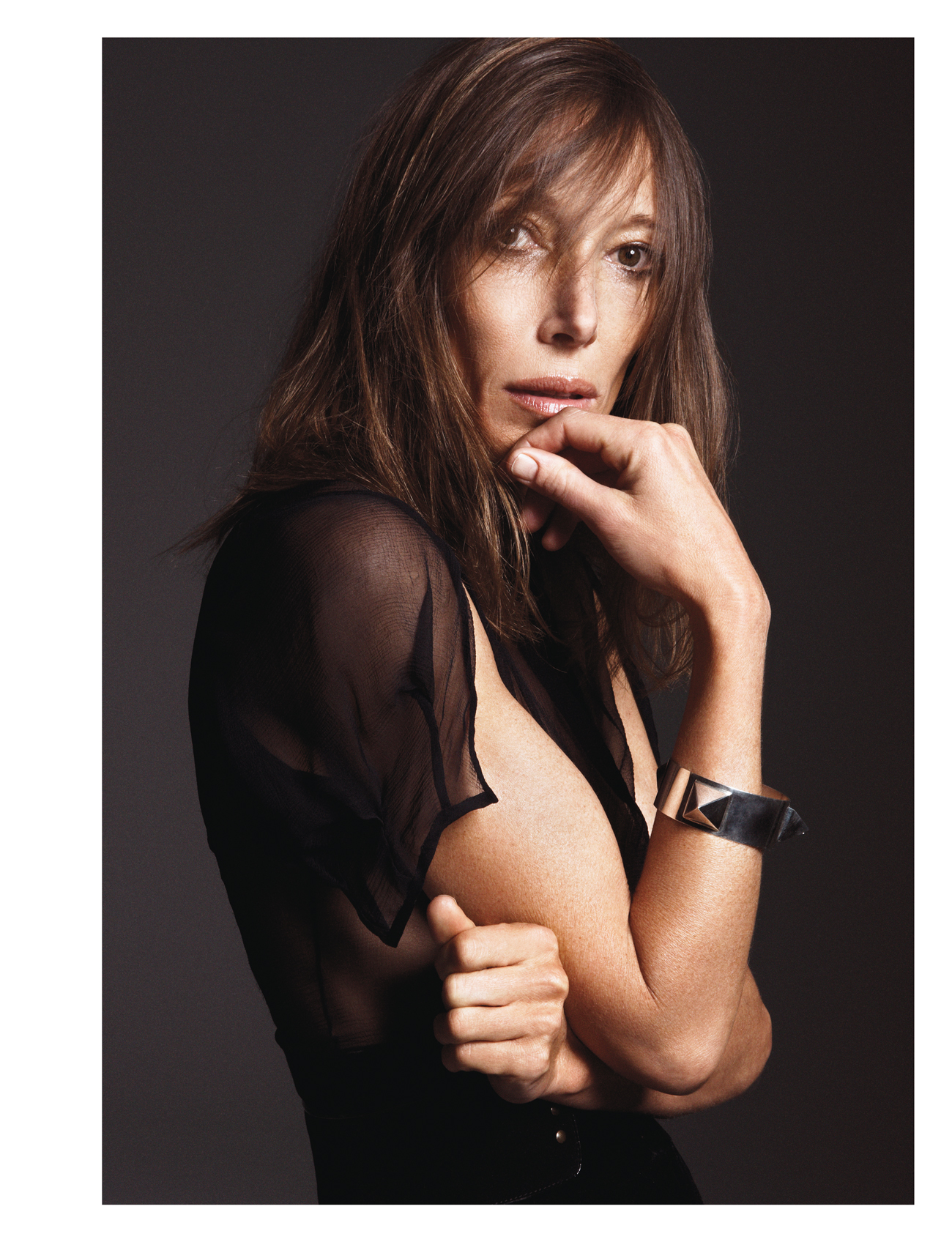 Camilla wears a black sheer blouse, skirt and belt YVES SAINT LAURENT and a spiky silver bracelet JANIS
Camilla wears a black sheer blouse, skirt and belt YVES SAINT LAURENT and a spiky silver bracelet JANIS
OLIVIER ZAHM — Your work has many layers, many dimensions: pictorial, sophisticated, violent, hardcore…
MARIO SORRENTI — It’s part of my personality, part of me, how I feel. I like exploration and discovery. It’s research — even the fashion shoots are research into what I think fashion really is. I’m a bank of images and information. I grew up surrounded by paintings, photographs, and images of the ’70s and ’80s — graffiti, collages, and pop culture. I absorbed it all and continually reference it. They talk to each other in my head: Pop Art talks to Renaissance Art, saying, What if we put this together? [Laughs]
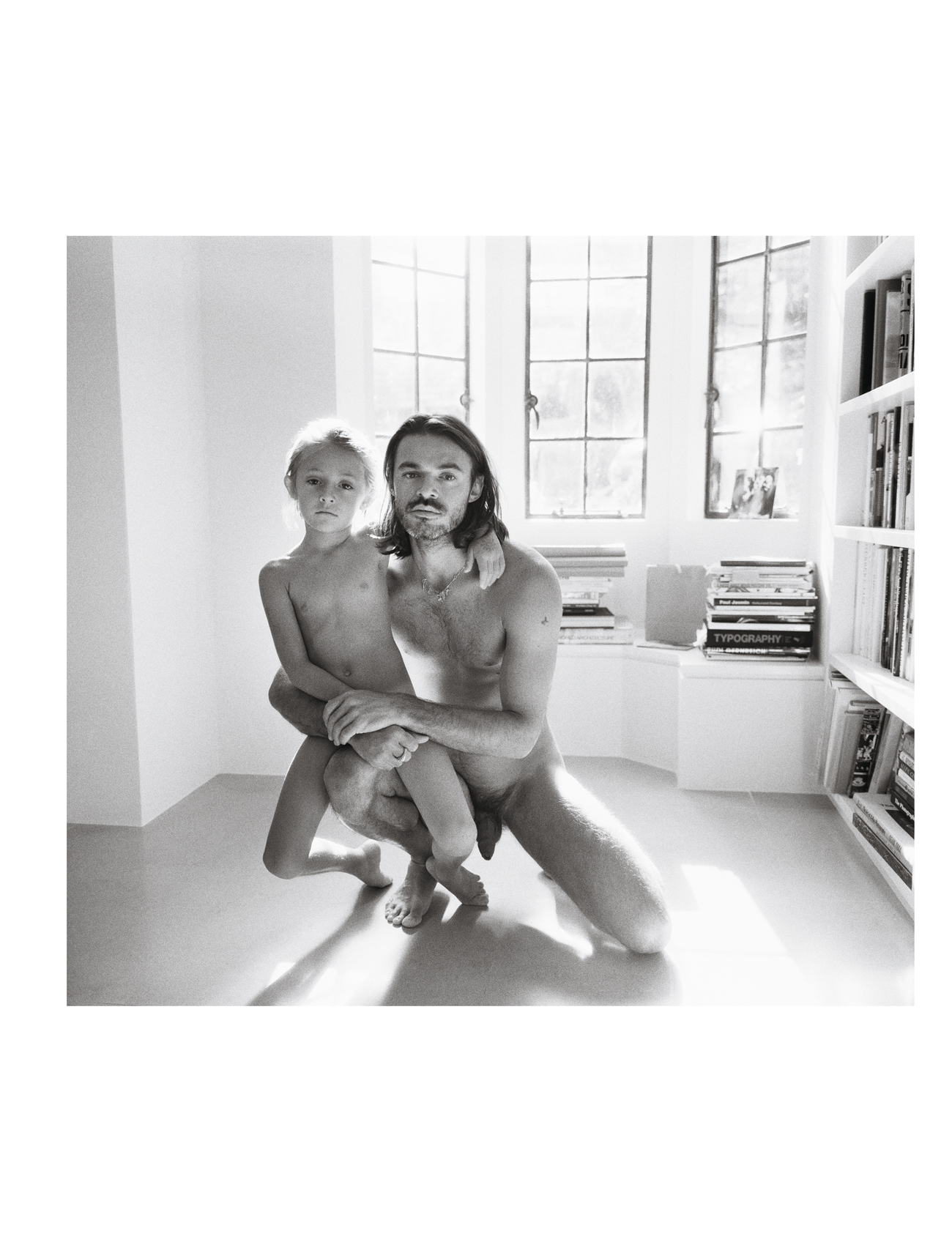 Mario Sorrenti and his daughter
Mario Sorrenti and his daughter
OLIVIER ZAHM — You grew up in Naples, surrounded by your father’s paintings. Did your mother influence your fashion sense?
MARIO SORRENTI — Yes. She was in fashion all her life. Both my father and mother were fascinated by the impact of fashion on Pop Art in the ’70s. Fiorucci and Warhol. Images were always coming into our house: Classical, Pop, Renaissance Art, pornography, advertising images like the Marlboro Man… My father would paint a picture of a girl who had big red lips, like a girl he saw in an ad. But from this period also came a concern for the respect of others, to be intimate, to regard others preciously. You have to stretch the limits of your personality to create art, and you have to respect and hold dear the people you share this experience with. I love sharing with people.
OLIVIER ZAHM — You often explore the function of the model in abstract, emotional ways.
MARIO SORRENTI — Emotional and, I believe, psychic ways. We communicate in very primal ways when we take photographs. So much is said in the way the photographer and model, the camera and the subject, look at each other. The motion of the eyes, the mouth, and the lips. The hairs that stand up on your arms say something to you. The responses and reactions between me and my models in the moment of creation is like a conversation.
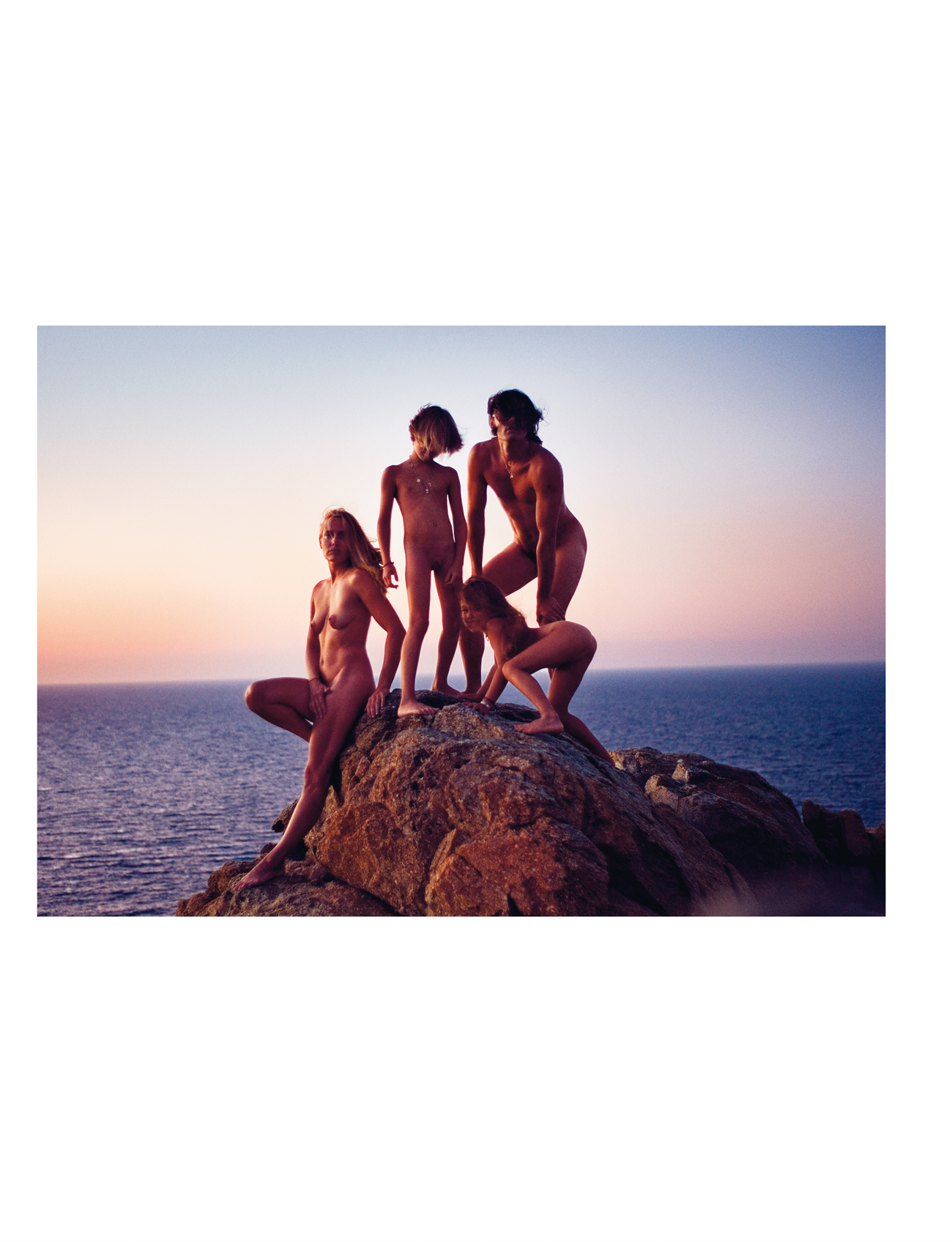 Mario Sorrenti, Mary Frey and their children
Mario Sorrenti, Mary Frey and their children
OLIVIER ZAHM — A picture can reveal emotions that subjects themselves are unaware of.
MARIO SORRENTI — Yeah, and I love that, that discovery. When you do nudes — it’s the ultimate unveiling, the ultimate intimacy. I think the subjects actually discover a lot about themselves. When I did portraits of the artist Shannon in the ’90s, we got deeply into the expression of her sexuality and sensuality, and she discovered another side of herself. And I discovered something about the psychic kind of communication that can happen when you photograph someone.
OLIVIER ZAHM — You still shoot a lot of nudes?
MARIO SORRENTI — Yes, it’s my favorite thing.
 Mary Frey and her daughter
Mary Frey and her daughter
OLIVIER ZAHM — Is it difficult to get people to agree to be photographed in the nude?
MARIO SORRENTI — Well, it all has to do with trust. I do it a lot, and I guess for some reason people trust me. And as people see more nude photography in magazines and elsewhere, they become more willing to take part in this kind of expression. I used to wonder how Helmut Newton got women to pose in the nude for him. But I think the world he created just became more concrete the more he was published, and as he became more recognized. People come to expect things from certain artists; it happens to me now.
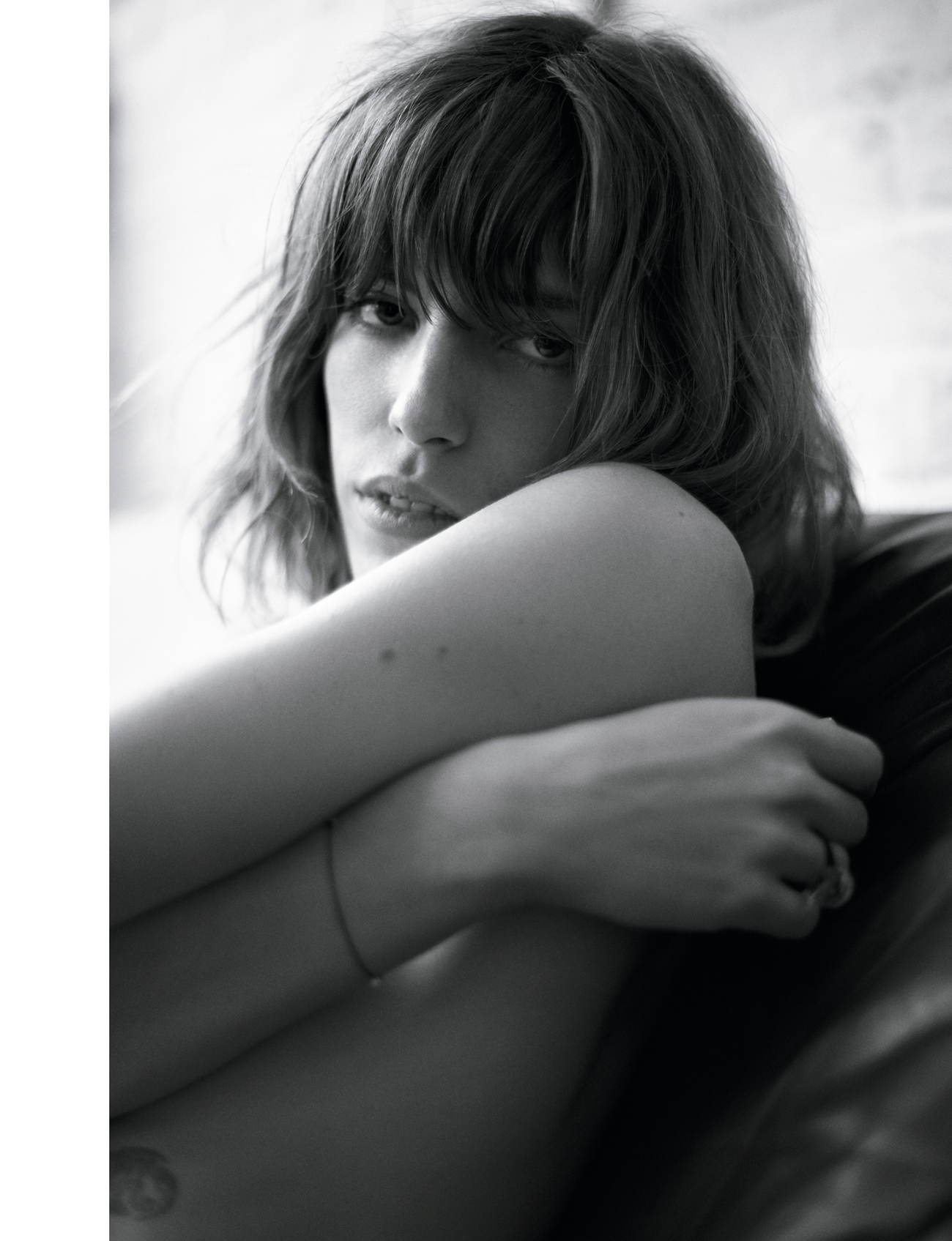 Lou Doillon
Lou Doillon
OLIVIER ZAHM — You’ve posed for some of your own pictures.
MARIO SORRENTI — That started because I was really losing my mind with boredom. I was trying to take an intense image and manipulate it into something that would challenge people but still be understandable. I was supposedly softening up something very raw. I actually wanted it to be more intense. So I thought, fuck this. I’m going to take off my clothes and jump into this picture! I’m going to make this picture what I want it to be. And I did! It was totally spontaneous. No one else wanted to get naked, so I had to! You do become very self-conscious when you turn the camera on yourself, but this weird instinct took over and the picture turned out great. It was a fashion shoot for Italian Vogue. The second one was taken on an iceberg off the coast of Greenland. A moment had to be seized, a moment you know you’ll remember for the rest of your life. I thought, just fucking do it. Take your clothes off and get in there! But you do come to realize that these things are just another part of who you are.
OLIVIER ZAHM — Can you tell me why you wanted Kate Moss to pose with you for the cover of Purple? I asked you to pose by yourself.
MARIO SORRENTI — The reason I wanted to pose with Kate is that I find it very difficult to be on the cover of a fashion magazine wearing fashion. Also, you wanted me to be nude and that’s really the only way I could do it. But then I wouldn’t really be serving the purpose of a fashion magazine cover model. So I thought, let’s take the biggest fashion icon of our time — Kate — and have her pose with me. But then it would obviously go beyond that, because I’m very good friends with Kate. So it becomes personal, intimate: the photo would have gone beyond fashion, beyond a fashion magazine, you know? But it was just an idea that just came to you and me when we were walking down Spring Street. [Laughs]
 Lou Doillon
Lou Doillon
OLIVIER ZAHM — How was the day that you spent with Lou Doillon for her shoot in this issue?
MARIO SORRENTI — I like surprise and spontaneity. I love the honest reactions of people experiencing something happening to them. It can be like an attack on them sometimes. It’s very interesting to me. But I never force anything on people. I just go with the flow. The shoot of Lou was really sweet. She seemed to challenge herself. The light was very beautiful that day. The way it came into the apartment created an intoxicating atmosphere. It made us feel comfortable, and ready to do things that hadn’t been done before. Wanting to do things that hadn’t been done before. I enjoyed that moment, knowing she felt safe, that she didn’t have to do anything embarrassing. It was all up to her.
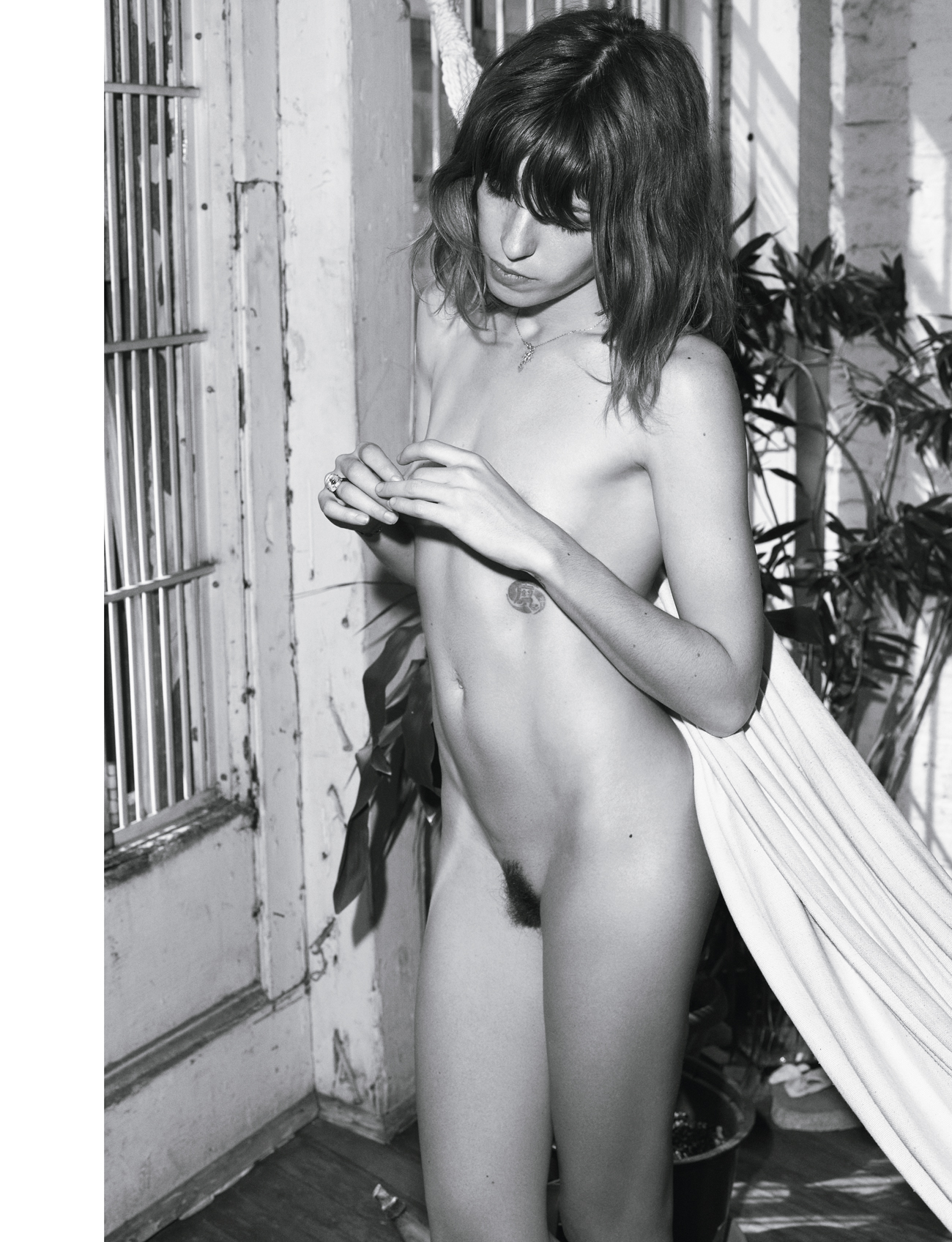 Lou Doillon
Lou Doillon
OLIVIER ZAHM — You don’t seem to mind being labeled as a fashion photographer, as opposed to an artist.
MARIO SORRENTI — I suppose when I was younger I did. I refused to accept the label Fashion Photographer. But now that I’ve experienced all the things I have, it’s like, you want me to be a fashion photographer? OK. You want me to be an artist? OK. I can be anything you want me to be! [Laughs] But I really do enjoy fashion photography. And I enjoy collaborating with artists. I enjoy my photographs viewed in an art context. It’s fun to see how people relate to my work. I just let it go and see what happens, where it goes. I stopped trying to say this is what it is. I almost believe pictures have a life of their own. Like the picture I shot of Kate Moss for Obsession at the beginning of my career. That photograph has left home, like a child, and started
a life of its own. [Laughs] It’s appeared in books. People appropriated it. Artists come on it. They incorporate it into their work. It’s been used in an obituary. People write graffiti on it. Reinterpret it. It’s like my child out there in the world, trying to survive. [Laughs] And when a picture of mine is shown in a museum, it’s exciting. Is it art? Is it fashion? All I know is that it’s a picture I took, and it’s out there.
 Mario Sorrenti
Mario Sorrenti
OLIVIER ZAHM — Do you still work on your diaries?
MARIO SORRENTI — Not as much as I used to. I don’t have as much free time. But I still do write and paint pictures in them. I collect photographs from other sources and put them in. It’s very personal. And it’s valuable because much of my work is born in it. It’s important to me because very abstract ideas can be born in it, without any complications. It’s not about making money. There are pictures of my family, my kids. There’s love, pain, writing — existential ideas, scientific ideas. There are newspaper pictures, which can really inspire me, and inspire fashion pictures.
 Lou Doillon
Lou Doillon
OLIVIER ZAHM — Like The New York Times pictures?
MARIO SORRENTI — Yes. They’re often incredible pictures. They go into the diary next to the portraits, the fashion pictures, the pictures of the kids, and the writing and painting. What’s exciting to me is that one day, when I’m gone, my kids will be able to look at it and say, “Wow, these are moments from our father’s life! And from our lives, as well!” It becomes very real.
OLIVIER ZAHM — Has having a family changed your working life very much?
MARIO SORRENTI — Yes. A lot. It’s funny: my father once said to me that it’s difficult to be an artist and be a family person. The two things are always in conflict. As my family life developed I moved away from documenting the relationships and experiences in my life as an artist, and I thought, wow, I have to find a new world now…
 Lou Doillon
Lou Doillon
OLIVIER ZAHM — … with the family?
MARIO SORRENTI — Exactly. But one that works! I knew I’d have to struggle not to lose my art, my passion, and my intensity — the rawness. And at the same time, not hurt my family. Is the conflict resolved? I don’t know. Maybe not! But my wife, Mary and my two kids see all the pictures that I do, and they understand it. So they’re part of it. You can’t blur things like you might have in the past. You have to decide which things are important enough for you to let your work life into your family life. You have to be clearer with yourself and with others. I just photographed two women nude in a hotel room in Tokyo. That could only happen when things are very clear — with my wife, and with me. You have to be very clear about boundaries, and about not passing them.
OLIVIER ZAHM — Why did you shoot these nude photographs, then?
MARIO SORRENTI — Because I want that moment. I want the photographs. I have to do that to get the photographs. I can become like a documentary photographer taking photographs in Iraq, you know? In this case I wanted to do my take on the work of the Japanese masters, Araki and the others. I started seeing the bodies of the models like I would those in a Renaissance painting. It was a very tender, very intimate moment.
 Lou Doillon
Lou Doillon
OLIVIER ZAHM — These pictures have an almost sculptural aspect about them.
MARIO SORRENTI — Yes, very much so. I showed these pictures to my wife, Mary, and she understood and loved them. She saw what I was trying to achieve and she appreciated it. My artistic journey becomes her journey, too.
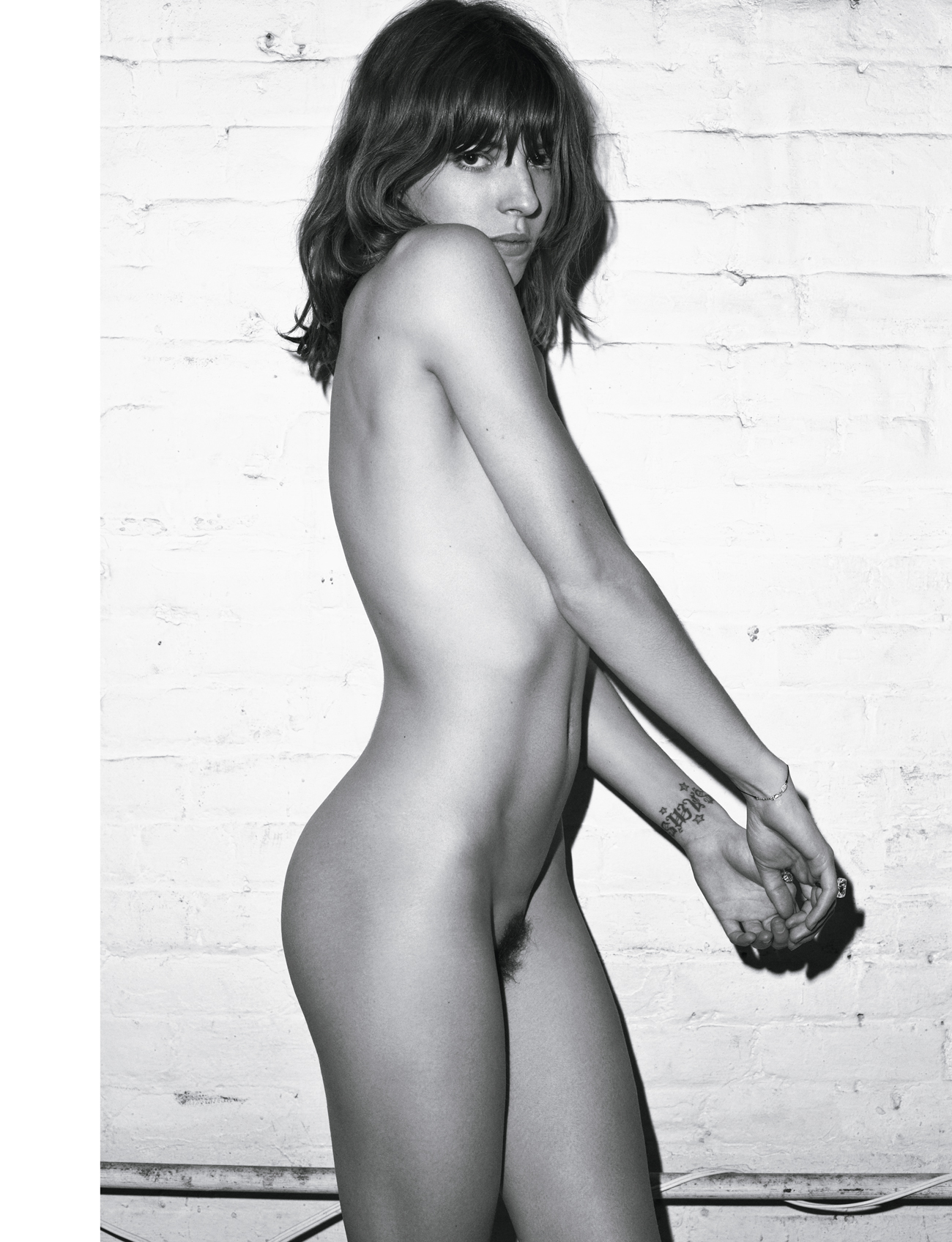 Lou Doillon
Lou Doillon
OLIVIER ZAHM — I love the pictures you took of Camilla Nickerson for this issue.
MARIO SORRENTI — It was an honor to photograph her. The session went very fast and afterward we found that we had captured some very powerful moments.
OLIVIER ZAHM — Fashion photography like yours expresses the profound side of fashion, not just its surface values.
MARIO SORRENTI — Fashion can be like punk rock — more as a way of life. The way you dress can reflect your life, your ideas, your emotions, your angst. That’s real fashion. But you could say the same thing about Paris Hilton. She’s like the punk rocker of excess — she’s expressing that, to the fullest. That’s really her! The pictures of Camilla are like that. They have a nerve. It’s real. She wears a dress like it’s in her blood to do so. That’s when fashion is at its best. When it’s not about the economic aspect of selling clothes, but about the expression of individuality and personal style.
 Mario Sorrenti
Mario Sorrenti
OLIVIER ZAHM — What feeds your inspiration today?
MARIO SORRENTI — Trying to be honest with myself. Being tough with myself. I get bored easily. I have to move on to the next thing that captures my imagination and passion, whatever that might be. When I get complacent, or if things are too easy, I have to destroy what I’ve done and start over.
 Lou Doillon
Lou Doillon
OLIVIER ZAHM — Certain photographers tend to stick to a style even after it’s become passé.
MARIO SORRENTI — I remember certain photographers and wonder what happened to them. Did they just disappear? Could that happen to me one day? When it’s their time, a monster comes out of the shadows and eats old photographers. I don’t think about it much, but I do tend to become dissatisfied with what I do. Then I need to destroy things — pictures, relationships — and re-find the excitement. But I’m trying to be more diplomatic, with myself, trying to restrain destructive tendencies.
portrait #3 french actress LOU DOILLON
 Mario Sorrenti
Mario Sorrenti
photographed by MARIO SORRENTI
interview by ANGELA GAIMARI
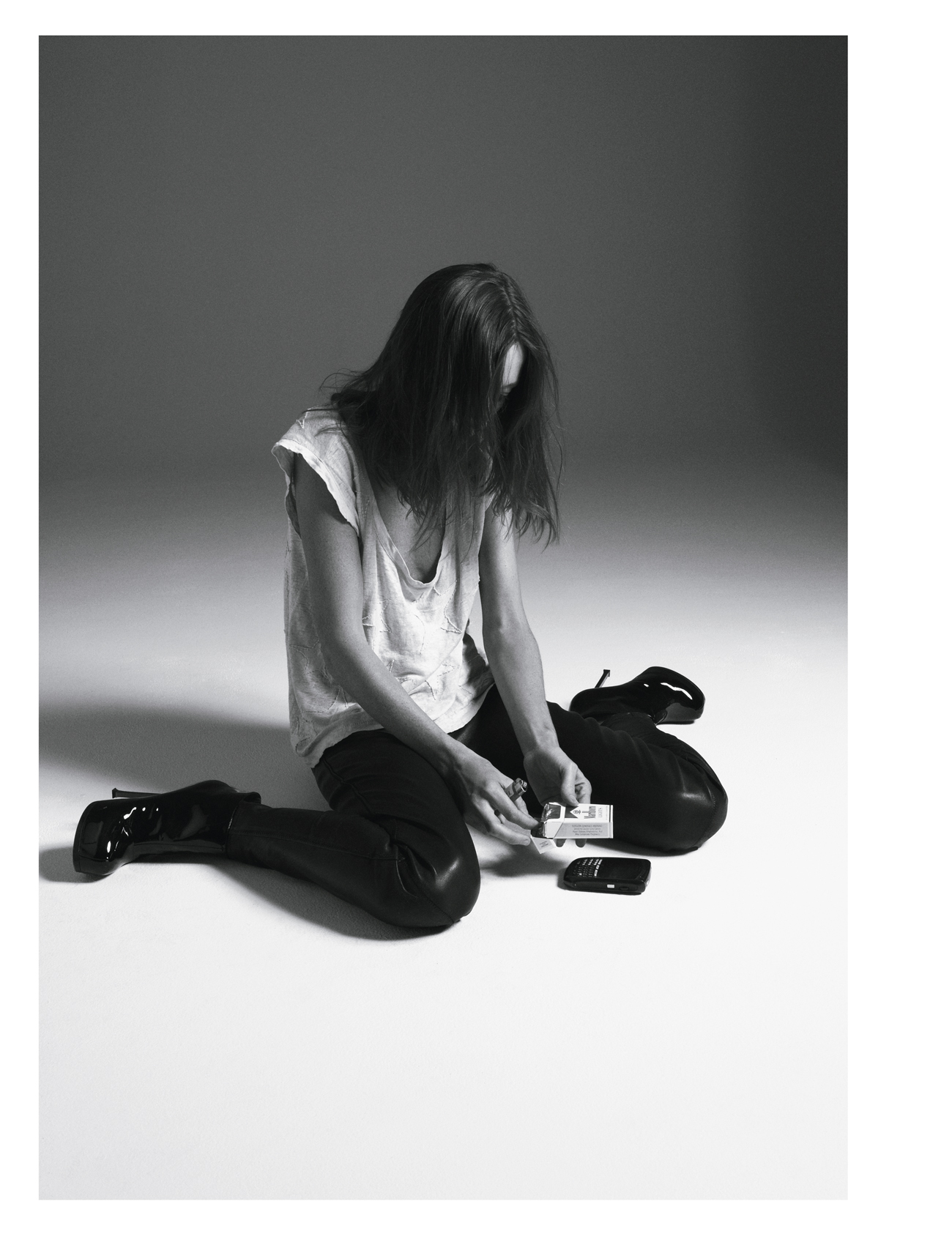 Camilla wears a white tee shirt and black patent ankle boots YVES SAINT LAURENT and black leather pants DARYL K
Camilla wears a white tee shirt and black patent ankle boots YVES SAINT LAURENT and black leather pants DARYL K
ANGELA GAIMARI — What’s in the bag?
LOU DOILLON — This guy who’s a bit creepy has been calling me. He wrote a script he wants me for. It was about snuff films — kind of interesting, but super violent. I’m supposed to see him on Sunday, but all the people I’m working with are like, “You are NOT going to see this guy.” I felt bad, and I was a bit spooked. He left this bag for me at the front desk of the hotel a few days ago. All my friends were like, “Don’t pick it up!” I didn’t want to pick it up, but as I walked through the lobby, the clerk handed it to me. Look at it: even his handwriting is spooky!
ANGELA GAIMARI — That’s creepy. I mean, you want to give people a chance, but a girl has to be careful.
LOU DOILLON — I always work with mad people, so I do have a margin. I mean, you never know. Hitchcock was a strange person, right? But in this guy’s film I would have been killed about 70 times. I get crucified. It’d be nice to do a film in America, but maybe this isn’t the one for me. My friends advised me not to make a movie about snuff films. This guy wants to take my son and me to a musical on Sunday. He knows The Wizard of Oz and all the Walt Disney musicals by heart. I thought that was sweet, but my manager was like “No, that’s actually kind of frightening.”
 Mario Sorrenti
Mario Sorrenti
ANGELA GAIMARI — Have you ever worked with someone whom you thought might be crazy but it ended up being worth it to overlook the kookiness?
LOU DOILLON — I haven’t met that many directors who I thought were completely insane. Some people are hard to work with. My father [Jacques Doillon] is super hard to work with. Bernie Bonvoisin and Abel Ferrara were hard to work with, but I never had a sense of being in actual danger. Maybe a tiny bit with Ferrara. He really started fucking with my brain, whether he wanted to or not. It was a kind of soft harassment. As a woman you can be weakened by strong male energy. After a few days, your head just shrinks and you need that soft woman energy.
 Lou Doillon
Lou Doillon
ANGELA GAIMARI — Your mother Jane Birkin and half-sister Charlotte Gainsbourg have been good sources of feminine artistic energy.
LOU DOILLON — I fall in love with women in music — especially strong women. I like women in rock, and women in folk. Patti Smith went further than many men did in the style she chose. For a man to forget all of the boundaries, and cross over, is a big deal. But it’s more powerful when a woman doesn’t care any more about physical aspects, whether of men or women — especially when that woman is also a mother. That’s why I have a special thing for Patti Smith. I’m obsessed with women artists. There aren’t many, because women have to make so many sacrifices. The ones who make it very rarely have children. There’s a common sentiment that if you create art, you can’t have children.
ANGELA GAIMARI — She’s been such a strong influence on women — and men — in music. I can also hear Patti Smith in the music I’ve heard by you. Who else are you listening to these days?
LOU DOILLON — I’ve been watching videos of Siouxsie and the Banshees on YouTube, and I thought, yeah, she went further than Sid Vicious. It’s more unexpected when a woman isn’t scared of her body or the movement she’s doing, or of putting a weird mask on her face, or of looking ugly or haunting. I find it braver for a woman to do it than for a man. Like Cat Power, PJ Harvey, and Beth Gibbons: they have a power that’s insane.
 Lou Doillon
Lou Doillon
ANGELA GAIMARI — These women are very strong. How do they find the power to take music so deep?
LOU DOILLON — I think it’s because women are more earthly. Men are much more in the sky; they’re expected to go mad because they’re not rooted the way we are. For a woman to let go — knowing she’s so motherly, so nurturing, so much a part of the earth — there’s something really touching about it. And scary. I don’t know. But something happens. So, ideally, I like to work with women. But it’s hard, because when one woman is able to make it, she’s rarely surrounded by a gang of other women.
 Mario Sorrenti
Mario Sorrenti
ANGELA GAIMARI — It might have been a little hippie-dippy, but the Lilith Fair was a big deal at the time — the idea of women coming together to play music. But, by and large, the music scene is still a boys’ club.
LOU DOILLON — I’m extremely feminist but not at all anti-men. In America this is completely understood, whereas in France, if you’re a feminist it means you hate men or that you’re a lesbian. Apart from modeling, which I think is the only job in the world in which women get paid more than men, women doing the same jobs are paid less. That’s just insane. Sometimes I think guys need to reassure themselves; so they don’t want us in the arts, because we already have so much power. We’re the mothers and the wives of powerful people. At the end of the day, there’s much more power in that. We may be frightening. We may have too much power. Maybe because we have the power at home, men don’t want us to have it in the office or on stage. But I think we are absolutely designed for it — singing, dancing, acting: we’re made for it. We’re made to play music. Women sing to their children to put them to sleep, much more than men do. It’s instinctual for women to sing. It’s a very womanly thing. I understand those poor men who try to get us out of the arts. We do things too well! We’re able to do many things at the same time. We’re mothers and workers and lovers and friends. And we’re able to do it all at the same time.
 Camilla Nickerson
Camilla Nickerson
ANGELA GAIMARI — This is especially true of you. All of your life you’ve been doing a million things at once.
LOU DOILLON — French and American cultures are very different: in France we’re very much against people who do many things at once. In France, in our culture, we think you can’t do two things because it means you can’t do one thing really well. In school you pick one subject, not more. You have one specialty. But I was really raised by English people. My mother is insanely good at drawing as well as being an insane cartoonist. She’s also a great singer, director and decorator, as well as a great humanitarian. My family is obsessed by the 16th, 17th, and 18th aristocracies, times when women were expected to do all of these things. As a little girl I was raised to paint, play piano, dance and to clean the house, iron and repair trousers. My mother wanted me to be intelligent and capable of adapting to every situation. The definition of intelligence is the capacity to adapt. It’s not anything to do with academic intellect. My mother wanted me to be able to eat with the Queen. And then eat with poor people on the other side of the world when I went there with her for her work.
ANGELA GAIMARI — But does your French side affect your motivation to undertake new ventures?
LOU DOILLON — My father is very French in terms of believing in doing one thing and doing it well. But when I started acting, at 14, he told me, “Lou, you have to remember what it is to be an actress and be a good actress,” meaning that it can only be a second job, that I had to find a job that gave me money and do films for pleasure. I thought he’d kill me if I got involved in fashion because he’s a gauchiste and against people with money, and absolutely against popularity and chic. He’s against all form of hype or promotion — he hates them all. I thought he would disinherit me! But he was the first one who expressed happiness about my fashion work. He said “Great, make money in that.” When I started designing for Lee Cooper, he said, “Show me your designs.” He said, “These are great. I can’t believe you’re doing this! Can I have those trousers?”
ANGELA GAIMARI — It can be intimidating to approach your parents with what you’re working on. Their opinions can seem to matter above all else. Do your parents like your music?
LOU DOILLON — One day I told my father, “I play the guitar a bit, Papa. Could I play you some stuff I’ve been doing?” He was super-proud and told me to go for it. My mother heard me for the first time only about three months ago, because I’m very, very shy. She said, “You have to do it.” One of the songs is called “Don’t You Go Wasting All Your Time,” and she was like, “Lou, don’t you go wasting all your time! Go into music.” It was lovely to have them on my side. One thing I love about New York is that here, what counts is the result and not why you’re doing it. In France, the first thing you’re asked is about your intention — why are you doing this or that. You want to say, well, look at the results: in the end they’re the only things that count.
 Camilla wears black tights with seam JONATHAN ASTON, black underwear AMERICAN APPAREL and black patent pumps with strap YVES SAINT LAURENT
Camilla wears black tights with seam JONATHAN ASTON, black underwear AMERICAN APPAREL and black patent pumps with strap YVES SAINT LAURENT
ANGELA GAIMARI — Yeah, it’s that way in the States. Everyone works on four different things, and has side-projects, without being judged too much. It’s just not like that in France, I guess.
LOU DOILLON — In France, people are very hard on a new generation. The old generation hardly makes a place for you. You have to wait for them to die to take their positions. In politics, in medicine — it’s very hard for the young generation here. That’s why so many young people run away to America or England. I don’t know why the French pretend to be so democratic and open, when in fact we’re still royalist. You have to open certain doors in a certain way in France. If you don’t, you’re fucked. You have to become a favorite. You have to find your spiritual guru. Do what he wants, exactly how he wants you to do it, and never get out of step. Maybe after 40 years of patience you’ll exceed. Fuck that! I won’t live that way.
ANGELA GAIMARI — Life is too short…
LOU DOILLON — If I had followed the recipe, when I was 17 I’d have said no to fashion and did another two intellectual films and stayed remote and sulky in interviews, smoking my cigarettes, not talking. If I’d have gone to Cannes I’d have had a love affair with a French director. And if I did not have a child, now I would be a respected French actress. Fuck that! I want to be happy in my life. I wanted to have a kid young. I’m not going to follow steps to make other people happy. I’m only going to live once. I’m fed up having to owe people. I already have a big family that I owe, in a way. I only care what my mother thinks, what my son thinks, and what my father thinks. That’s already enough, maybe too much. I don’t need to worry about what snobs think. I don’t have time to run after hype. I have nothing more to lose in France. It’s quite reassuring, actually.
ANGELA GAIMARI — New York is a big place. There’s plenty of room for creative people.
LOU DOILLON — I can’t wait to do an independent film in New York, to have a reason to move here. I’m waiting for any sign to move here. I can do fashion from here. It’s not that far from Paris. I wish I had one or two little projects so I could make enough money to rent a flat here, put my son in school here, and go back and forth. Theater takes so much time, and I don’t know yet if I enjoy it that much. I just did a one-woman show, which was hard. I can’t wait to be with other actors because doing a show and touring alone is hell. Especially when you’re single and have a kid. But I loved it.
ANGELA GAIMARI — How do you find the inspiration to design clothes when you’re so busy with all your other endeavors?
LOU DOILLON — My Lee Cooper winter collection is about Jules et Jim, and the energy of running. We shot the ads for it on train tracks. I was always thinking of a girl on a train. All I could see were train tracks. My manager said, “Of course! You’ve been on tour for a year!” I only had one suitcase and sometimes I didn’t go home for 12 days. So: big hoodies, big trousers, and outfits you can tweak around. I made a super long t-shirt you can change around to a mini-dress or a double t-shirt. It takes up almost no space in a suitcase but you can wear it all different ways. I love patchwork, and the idea was to make clothes that you wear in as many ways as possible. We don’t all have millions of dollars to spend on clothes.
ANGELA GAIMARI — The most poignant inspiration seems to come from your own life. Where else do you go for ideas?
LOU DOILLON — I’m going to India to get inspiration for colors. I’m bad with colors. I only like faded colors and I know people don’t like them that much. So I have to make an effort. But for that I need to find colors I like, and I think India is the place to find beautiful colors. The best styles are at schools. I’m such a school stalker. I could get arrested! The best styles come from college kids in Japan and England. Why? Because they have to wear a uniform, and they find ways of tweaking it. Japanese girls do crazy things like tie their ties around their legs.
ANGELA GAIMARI — Tokyo is such a trip.
LOU DOILLON — It’s everything that doesn’t make any sense, pushed to the extreme. I find it much more human and touching than the rest of the world. I saw a guy who had the Chanel surfboard — he was dressed up in the whole Chanel surf outfit — but he wasn’t going surfing, he was just walking around Tokyo with a surfboard because that was part of his look. Another time I was there I saw the fashion of looking wounded: girls in the streets had fake blood and bandages on. They dress up and pretend they’re weird 12-year-old schoolgirls who are going to be raped, or they pretend they’re the tortured lady from Silent Hill. It’s not vulgar, even though there’s no nuance whatsoever. You cannot imitate the Japanese style if you’re not Japanese. It looks stupid. But on them it looks amazing.
ANGELA GAIMARI — Their culture is so very different from ours. It’s difficult to find commonality between the two.
LOU DOILLON — I’m obsessed by Japanese culture, by everything about it that’s hidden. Their literature and art are so interesting because everything in their daily lives is so repressed. When they’re finally able to express themselves, it comes across as more mad than in any other country. That’s where Japanese art resembles American art — in the reaction to the sickeningly puritan aspect of their cultures. Thanks to that reaction, you get Charles Bukowski, Henry Miller, William Faulkner, and Flannery O’Connor. When a system is healthy, you don’t get such geniuses. It’s because it’s fucked up that you do. They can’t talk about sex, so when they finally do it’s insane, because everything has been repressed to such a degree.
ANGELA GAIMARI — Sometimes I fantasize about living in another time. Do you ever do that?
LOU DOILLON — Our time now is an interesting one. I’m happy to be alive in this period. Something’s going to explode, one way or another. I hate American politics and I hate Sarkozy, because both keep telling the lie that we should feel insecure. Historically speaking, we’ve never been as safe as we are today, in terms of education, women’s rights, health, humanities, and the future. The government thinks the best way for it to work is through the propaganda of fear. I’m sick and tired of the promotion of ugliness on television. There are loads of beautiful moments happening all the time. We’re in a graceful time right now, even though horrific stuff is happening all around. There have always been wars; now we know more about what’s happening on the other side of the planet.
ANGELA GAIMARI — If you had your way, who, in film, would you like to collaborate with?
LOU DOILLON — Woody Allen, David Lynch, Wim Wenders, Juliette Lewis, Lily Taylor, Steve Buscemi, Shirley Maclaine, Meryl Streep…
ANGELA GAIMARI — What about working with other fashion designers?
LOU DOILLON — I’m very influenced by other designers, but I don’t know who would be interested in working with me. On a purely fantasy level, Alexander McQueen and Martin Margiela would be the most interesting — just to see how they work. I also have a thing for John Galliano. Half of his stuff I’d never wear, not in a thousand years, but I’m so happy he does it.
ANGELA GAIMARI — Are there musicians you’d like to work with?
LOU DOILLON — Jack White, for sure. I like Pete Doherty a lot. I like the way he works. I’d like to see how he does it. I like the way he records and the sound of his albums. I love Adam Greene — I love The Moldy Peaches. I love Devendra Banhart. I like their new way of doing things, their work ethic. It’s the way to do it. Everything should be done at home. Overproduction is passé. What’s most personal is what becomes the most universal. It’s the little moments that you suddenly realize relate to everyone, rather than trying to find the big story everyone’s going to relate to. It’s the tiny moments — a silly tiny feeling in the morning can be universal.
ANGELA GAIMARI — Do you sometimes feel like the more you have going for you, the harder it is to find someone who would be comfortable going out with you? Men can be very intimidated by a young woman who has a lot going on.
LOU DOILLON — It’s hard. I’m not too interested in finding a guy who’s my own age, because a guy that young is still more in love with himself and with the image of himself with the woman. When he’s making love to a woman, he’s not looking at her. He’s imagining himself making love to her — what it looks like. I picture myself with someone older, like a fifty-year-old professor — basically someone like my father. Someone who’s very intelligent and who can challenge me. In a man, the most erotic thing is concentration. Seeing a man concentrate is the best thing. When I see a mathematician working away at an equation, I fall in love straight away. That’s my biggest turn on.
ANGELA GAIMARI — When are you happiest?
LOU DOILLON — When I look at someone I love. I love being a voyeur and seeing people happy. That’s why I love stealing happy moments in the street. I love seeing little tiny moments on the metro — a grandfather with his grandson, laughing their heads off. Tiny moments. When I see my son happy, laughing at something. The day I saw him socializing with other people was the day I knew that I could die and he wouldn’t be lost in the world.
ANGELA GAIMARI — I guess that wraps it up. So, are you really not going to open that bag from the creepy guy?
LOU DOILLON — Oh, no. No way.
END
